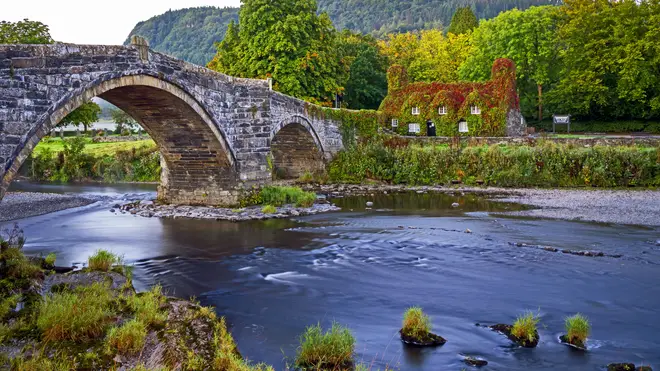
Tom Swarbrick 4pm - 6pm
28 September 2021, 16:04

House prices have been rising at around three times the national annual rate in some rural and coastal areas, ONS figures show.
Young and low-paid workers face being priced out of living in rural and coastal areas as former city dwellers find they can work remotely, figures suggest.
The housing affordability squeeze could be contributing to hospitality businesses struggling to fill vacancies, the Office for National Statistics (ONS) said.
In July 2021, house prices were rising at around three times the national annual rate (8.0%) in some rural and coastal areas, such as Conwy in North Wales (25.0%), North Devon (22.5%) and Richmondshire in the Yorkshire Dales (21.4%), ONS figures show.
By contrast, house prices in the City of London borough fell by just over 10% annually in July.
The ONS bulletin said: “Rising house prices and private rents mean that some workers are at risk of being priced out of living in rural and coastal areas, contributing to skill shortages in the tourism and hospitality industries that their local economies rely on.”
The average UK house price was £256,000 in July 2021, which was £19,000 higher than a year earlier.
While house price changes are partly due to a temporary stamp duty holiday, they also reflect a shift in consumer preferences with growth being driven by rural and coastal areas, the ONS said.
It continued: “There is some evidence of people house-hunting in rural areas, rather than in cities, because of a change in their circumstances during the pandemic, such as being able to work remotely.”
Prospective home buyers are seeking more space, with prices for detached houses (9.0% annual growth in July) consistently rising faster than those for terraced houses (7.7%) or flats (6.1%).
House price growth during the pandemic is being led by rural and coastal areas.
With private rents also rising, some workers are at risk of being priced out, contributing to skill shortages in tourism and hospitality that the local economies rely on https://t.co/jeM1GlApsJ pic.twitter.com/2XZlliAeAY
— Office for National Statistics (ONS) (@ONS) September 28, 2021
Sarah Coles, personal finance analyst, Hargreaves Lansdown, said: “The countryside and seaside were the property hotspots of the past year, as more city dwellers upped sticks and moved to the sticks.
“House prices are booming at three times the national average in some of these areas, which is pricing out younger people and those on lower wages.
“This isn’t just devastating for families, who can no longer afford to live in their hometown, it’s also a nightmare for restaurants, pubs, hotels and ice cream parlours, whose employees are leaving town.
“How and where we want to live has changed over the past year, so more and more people have joined the race for space.”
Ms Coles added: “In tourist areas, renters have been hit by landlords switching properties over to more lucrative holiday lets, to take advantage of the boom in the number of people holidaying in the UK.
“It’s a horrible struggle for young people and those on lower incomes in particular, which includes many of those working in the hospitality businesses that dominate the local economy. It has also created a real headache for these small businesses struggling to find staff, as more of their employees leave the area.”
Nathan Emerson, chief executive of estate and letting agents’ body Propertymark, said: “The pandemic has been a catalyst for change in many people’s lives and we are now seeing a rush for larger properties, more outside space and more idyllic living.
“Couple this with low interest rates and the stamp duty holiday and what we have seen is a tremendous amount of pressure on rural and coastal areas whose housing provision and infrastructure are not designed for such an influx.
“We’ve also seen house prices in these areas inflate; this is because many properties have seen such demand that they have gone to best and finals with up to 19 buyers per home.
“As buyers from out of area bring with them higher wages, the bidding wars have been astronomical in certain hotspots.
“Other areas, mainly cities such as London, have seen a dramatic decrease in demand and therefore low prices. Because of this, we have seen these places become more attractive for investors.”